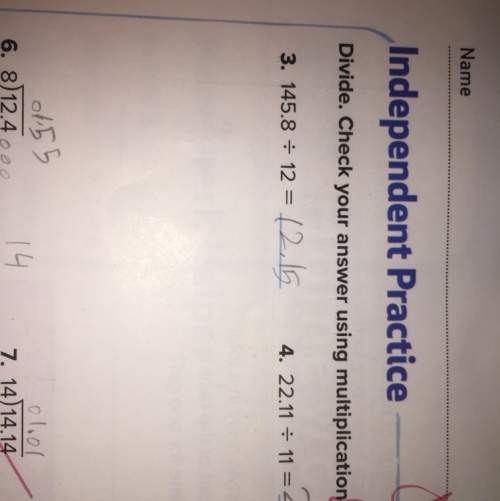
Mathematics, 21.06.2019 22:50 ciaotaylor
1. if events a and b are non-overlapping events, how do you find the probability that one or the other occurs? 2. what does it mean if p(a or b) equals 1?

Answers: 2


Another question on Mathematics

Mathematics, 21.06.2019 17:00
Find the measure of the interior angles of the following regular polygons: a triangle, a quadrilateral, a pentagon, an octagon, a decagon, a 30-gon, a 50-gon, and a 100-gon.
Answers: 1

Mathematics, 21.06.2019 18:30
According to the 2008 u.s. census, california had a population of approximately 4 × 10^7 people and florida had a population of approximately 2 × 10^7 people. which of the following is true? a. the population of florida was approximately two times the population of california. b. the population of florida was approximately twenty times the population of california. c. the population of california was approximately twenty times the population of florida. d. the population of california was approximately two times the population of florida.
Answers: 1

Mathematics, 21.06.2019 21:10
What is the equation of a line passing through (-6,5) and having a slope of 1/3
Answers: 3

Mathematics, 21.06.2019 22:00
In dire need~! describe how to use area models to find the quotient 2/3 divided by 1/5. check your work by also finding the quotient 2/3 divided by 1/5 using numerical operations only.
Answers: 1
You know the right answer?
1. if events a and b are non-overlapping events, how do you find the probability that one or the oth...
Questions




Social Studies, 28.08.2019 03:30

Computers and Technology, 28.08.2019 03:30





Social Studies, 28.08.2019 03:30


Social Studies, 28.08.2019 03:30






Mathematics, 28.08.2019 03:30





